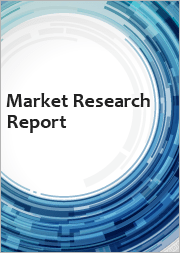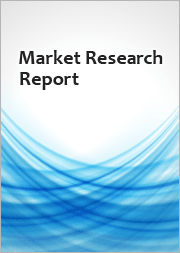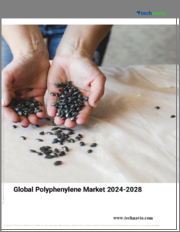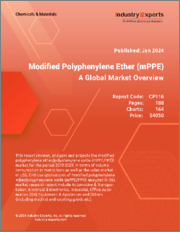
|
시장보고서
상품코드
1665117
폴리페닐렌 에테르 시장 보고서 : 동향, 예측, 경쟁 분석(-2031년)Polyphenylene Ether Market Report: Trends, Forecast and Competitive Analysis to 2031 |
||||||
세계 폴리페닐렌 에테르 시장의 잠재력은 의료, 자동차, 항공우주, 전기 및 전자 시장에서의 기회로 인해 유망합니다. 세계 폴리페닐렌 에테르 시장은 2025년부터 2031년까지 7.5%의 CAGR로 2031년까지 약 24억 달러에 달할 것으로 예상됩니다. 이 시장의 주요 촉진요인은 자동차 및 의료기기에 대한 응용이 증가하고 있다는 점입니다.
- Lucintel은 유형별로는 PPE/PS가 예측 기간 동안 가장 높은 성장세를 보일 것으로 예상하고 있습니다.
- 지역별로는 아시아태평양이 여전히 가장 큰 지역으로, 이는 아시아태평양에 광범위한 화학 및 제조 부문이 존재하기 때문입니다.
폴리페닐렌 에테르 시장의 전략적 성장 기회
최근 몇 년 동안 폴리페닐렌 에테르 시장은 다양한 응용 분야에서 전략적 성장 기회를 창출하고 있습니다. 이러한 성장 기회는 기술 발전, 수요 증가, 긍정적인 시장 전망에 의해 이루어지고 있습니다.
- 자동차 산업의 확대 : 자동차 산업은 고성능 소재를 요구하고 있으며, PPE의 성장 전망을 낳고 있습니다. 이 시장 개척은 내구성과 내열성이 뛰어난 PPE 소재의 개발로 이루어지고 있습니다.
- 전자 및 전기 응용 분야 : 전자 산업은 주로 전기 절연 특성을 위해 PPE를 요구하고 있습니다. 성장 기회에는 열 및 전기적 성능 기준을 충족하는 첨단 장비 및 부품용 PPE의 개발이 포함됩니다.
- 의료 분야 개발 : PPE는 의료 시장, 특히 의료기기 및 장치에서 점점 더 널리 보급되고 있습니다. 새로운 개발 기회로는 의료 용도에 맞게 더 나은 생체적합성과 멸균 특성을 가진 PPE 소재의 개발이 있습니다.
- 재생에너지 자원의 통합 : 풍력 터빈 블레이드와 태양광 패널의 건설을 위해 청정에너지 자원과 물리적 에너지 자원의 결합이 요구되고 있습니다. 극한의 기상 조건에서도 높은 성능을 유지하는 복합재료와 플라스틱의 개발에 성장 기회가 집중되고 있습니다.
- 소비재 및 포장 : PPE 소재의 유리한 특성으로 인해 소비재 및 포장에 PPE의 사용이 증가하고 있으며, PPE의 인장 강도를 활용하면서 유해한 특성을 완화하는 새로운 포장재를 설계할 수 있는 기회도 있습니다.
위의 개발 영역은 폴리페닐렌 에테르 시장의 성장을 가로막는 장벽을 없애고 있습니다. 이러한 발전은 창의성과 혁신성을 장려하여 성장을 위한 새로운 길을 제공하고 있습니다.
폴리페닐렌 에테르 시장의 촉진요인 및 과제
폴리페닐렌 에테르 시장은 기술 개발 및 정치적 요인의 영향을 받아 몇 가지 중요한 촉진요인 및 과제에 직면하고 있습니다. 이러한 요인은 시장 구조와 성장 기회에 큰 영향을 미칩니다.
촉진요인
- 기술 발전 : PPE 재료의 열적 및 전기적 특성의 급속한 개선은 시장의 변화를 촉진하고 있습니다. 이러한 개선을 통해 재료는 고성능 응용 분야의 증가하는 요구 사항을 충족하고 응용 분야를 넓힐 수 있습니다.
- 자동차 및 전자제품의 수요 증가 : PPE의 수요는 자동차 산업과 전자제품 산업의 영향을 크게 받고 있습니다. 이들 분야에서 효율적인 소재에 대한 요구가 증가함에 따라 PPE 제조업체의 시장이 확대되고 있습니다.
- 지속가능성에 대한 중요성 : 환경에 대한 인식이 높아짐에 따라 점점 더 많은 제조업체들이 친환경 공정을 채택하고 재활용 가능한 PPE 소재를 생산하고 있습니다. 이 전략은 현재 시장 동향과 규제 요구사항에 부합하는 전략입니다.
- 응용 분야 확대 : 의료 및 재생에너지와 같은 시장에서 PPE의 채택이 증가하고 있으며, 성장이 예상됩니다. 이러한 진화는 시장의 범위를 넓히고 특정 PPE 제품에 대한 수요를 증가시키고 있습니다.
- 첨단 소재에 대한 규제 지원 : 첨단 소재를 지지하는 정책과 기준은 PPE의 생산과 응용을 강화합니다. 이러한 규제 준수는 혁신적인 프로세스를 지원하고 PPE 제품의 소비 시장을 확대할 수 있습니다.
과제:
- 높은 제조 비용 : 고급 PPE 소재와 관련된 생산 비용은 수익성과 경쟁력에 큰 영향을 미칠 수 있습니다. 이 문제를 해결하는 것은 시장의 성장과 접근성을 유지하는 데 매우 중요합니다.
- 규제 준수의 복잡성 : PPE 소재에 대한 규제 프레임워크를 이해하는 것은 어려운 일입니다. 다양한 시장에서 수많은 규제가 존재하기 때문에 상당한 자원과 전문 지식이 필요하며, 시장 진입과 확장을 복잡하게 만듭니다.
- 공급망 혼란 : 원자재 부족이나 물류 중단과 같은 문제는 PPE의 제조 및 공급에 혼란을 초래할 수 있습니다. 시장의 안정성을 유지하고 수요를 충족시키기 위해서는 이러한 혼란을 관리하는 것이 필수적입니다.
폴리페닐렌 에테르 시장에 영향을 미치는 촉진요인과 과제는 기술 혁신과 전략적 계획의 기회를 시사합니다. 혁신과 효과적인 계획을 도입함으로써 기업은 시장을 탐색하고 식별된 성장 분야를 활용할 수 있습니다.
목차
제1장 주요 요약
제2장 세계의 폴리페닐렌 에테르 시장 : 시장 역학
- 소개, 배경, 분류
- 공급망
- 업계 성장 촉진요인과 과제
제3장 시장 동향과 예측 분석(2019-2031년)
- 거시경제 동향(2019-2024년)과 예측(2025-2031년)
- 세계의 폴리페닐렌 에테르 시장 동향(2019-2024년)과 예측(2025-2031년)
- 세계의 폴리페닐렌 에테르 시장 : 종류별
- PPE/PP
- PPE/PA
- PPE/PS
- 세계의 폴리페닐렌 에테르 시장 : 용도별
- 의료
- 자동차
- 항공우주
- 전기·전자
- 기타
제4장 지역별 시장 동향과 예측 분석(2019-2031년)
- 세계의 폴리페닐렌 에테르 시장 : 지역별
- 북미의 폴리페닐렌 에테르 시장
- 유럽의 폴리페닐렌 에테르 시장
- 아시아태평양의 폴리페닐렌 에테르 시장
- 기타 지역의 폴리페닐렌 에테르 시장
제5장 경쟁 분석
- 제품 포트폴리오 분석
- 운영 통합
- Porter's Five Forces 분석
제6장 성장 기회와 전략 분석
- 성장 기회 분석
- 세계의 폴리페닐렌 에테르 시장 성장 기회 : 종류별
- 세계의 폴리페닐렌 에테르 시장 성장 기회 : 용도별
- 세계의 폴리페닐렌 에테르 시장 성장 기회 : 지역별
- 세계의 폴리페닐렌 에테르 시장 최신 동향
- 전략적 분석
- 신제품 개발
- 세계의 폴리페닐렌 에테르 시장 생산능력 확대
- 세계의 폴리페닐렌 에테르 시장 기업 인수합병(M&A), 합작투자
- 인증과 라이선싱
제7장 주요 기업 개요
- Asahi Kasei
- SABIC
- Mitsubishi Engineering-Plastics
- RTP
- Sumitomo Chemical
- LyondellBasell
- Polyplastics
- Celanese
- Ensinger
- Saudi Basic Industries
The future of the global polyphenylene ether market looks promising with opportunities in the healthcare, automotive, aerospace, and electricals & electronics markets. The global polyphenylene ether market is expected to reach an estimated $2.4 billion by 2031 with a CAGR of 7.5% from 2025 to 2031. The major drivers for this market are the increasing application of this product in automobile and healthcare devices.
- Lucintel forecasts that, within the type category, PPE/PS is expected to witness the highest growth over the forecast period.
- In terms of regions, APAC will remain the largest region due to the presence of an extensive chemicals and manufacturing sector in the region.
Gain valuable insights for your business decisions with our comprehensive 150+ page report.
Emerging Trends in the Polyphenylene Ether Market
With the evolving processes within the polyphenylene ether market, changes in technology and the needs of end users can be observed. The necessary performance and sustainability requirements are not only altering material properties but also transforming the methods of their production and application.
- Demand for Advanced Materials: The increasing demand for PPE that incorporates higher thermal, chemical, and electrical insulation properties is a catalyst for innovations. These materials are being used more widely in the automotive and electronics industries that require high performance. This trend is forcing manufacturers to create more sophisticated formulations and PPE composites.
- Corporate Social Responsibility: There is a growing emphasis on how products are manufactured to account for environmental considerations. To reduce waste and inefficient energy consumption, firms are adopting recycling systems and clean production technologies. This trend outlines the efficient yielding of products in the market according to global sustainability norms.
- New Applications of Extended Reach: PPE is expanding into non-traditional spheres of service. New industries, such as healthcare, renewable energy, and consumer goods, are exploring the use of PPE for its properties. This diversification is creating new advanced markets and increasing the demand for tailored PPE products.
- Advancements in Production Technologies: Additive manufacturing, automation, and other advancements in production technologies are improving the efficiency of the PPE manufacturing process. These enhancements are elevating quality and decreasing material costs, allowing high-performance PPE to be used in more areas.
- Regulatory and Compliance Pressures: Regulations and legal standards concerning the environment and health and safety are impacting the production and use of PPE. These regulations compel manufacturers to develop products favorable to regulatory requirements. This trend is propelling the shift towards safer and cleaner PPE.
Recent Developments in the Polyphenylene Ether Market
Recent developments in the polyphenylene ether market are influenced by technological advancements, the expansion of application areas, and changes in regulations. Such developments are emerging in the industry and affecting the market.
- Advancement in High-Performance PPE Materials: Emerging formulations of PPE are providing enhanced thermal and electrical protection. Due to better performance and reliability, these materials are increasingly being used in complex applications, such as automotive parts and electronic devices.
- Sustainable Production Practices: More attention is being directed towards sustainability, with many companies implementing green production methods and recycling technologies. Companies are adopting this strategy due to regulations and customers' willingness to buy more environmentally responsible products, which alters manufacturing practices and material choices.
- Expansion of PPE Applications: PPE is extending its usage to newer industries, such as healthcare and renewable energy. This suggests that improvements in material properties will facilitate the adoption of new applications, thus broadening the market for specialized PPE.
- Research and Development in Manufacturing: Technological advances, such as automation and additive manufacturing, are boosting the efficiency and quality of PPE manufacturing processes. These innovations make it easier and cheaper to produce advanced PPE designs.
- Regulatory Compliance and Standards: Stringent regulations have compelled end users to adopt safer and greener PPE. Companies are making greater efforts to meet new standards, which in turn shapes product development processes and marketing strategies.
These advances are significantly transforming the polyphenylene ether market, encouraging innovation, greener practices, and the expansion of applications. The market is addressing these challenges, influencing its growth and direction in the coming years.
Strategic Growth Opportunities for Polyphenylene Ether Market
In recent years, strategic growth opportunities in the polyphenylene ether market have emerged across different applications. Such opportunities have been prompted by technological advancements, rising demand, and a positive market outlook.
- Automotive Industry Expansion: High-performance materials are in demand in the automotive industry, creating growth prospects for PPE. This market growth has been driven by the development of more durable and heat-resistant PPE materials.
- Electronics and Electrical Applications: The electronics industry seeks PPE primarily for its electrical insulation properties. Growth opportunities include advancing PPE for high-tech devices and components to meet thermal and electrical performance criteria.
- Healthcare Sector Development: PPE is becoming increasingly popular in the healthcare market, particularly in medical equipment and devices. New opportunities include developing PPE materials with better biocompatibility and sterilization properties tailored for medical applications.
- Integration of Renewable Energy Sources: The combination of clean energy resources and physical energy resources is sought in the construction of wind turbine blades and solar panels. Opportunities for growth focus on developing composites and plastics that maintain high performance under extreme weather conditions.
- Consumer Goods and Packaging: The use of PPE in consumer goods and packaging is rising due to the advantageous properties of PPE materials. Opportunities include designing novel wrapping materials that leverage the tensile strength of PPE while mitigating harmful properties.
These thrust areas are breaking down barriers that would otherwise hinder the growth of the polyphenylene ether market. These developments provide new avenues for growth by encouraging creativity and innovation.
Polyphenylene Ether Market Driver and Challenges
The polyphenylene ether market faces several critical drivers and challenges, influenced by technological development and political factors. These factors significantly regulate market structure and growth opportunities.
Drivers:
- Technological Improvements: Rapid advancements in the thermal and electrical properties of PPE materials are driving market changes. These improvements enable materials to meet the increasing requirements of high-performance applications and broaden their application base.
- Increasing Demand in Automotive and Electronics: Demand for PPE is heavily influenced by the automotive and electronics industries. The rising need for efficient materials in these sectors is expanding the market for PPE manufacturers.
- Focus on Sustainability: Growing environmental consciousness is prompting more producers to adopt eco-friendly processes and produce recyclable PPE materials. This strategy aligns with current market trends and regulatory demands.
- Expanding Application Areas: The increasing adoption of PPE in markets like healthcare and renewable energy is promising growth. This evolution is broadening the market's scope and increasing demand for specific PPE products.
- Regulatory Support for Advanced Materials: Policies and standards favoring advanced materials enhance the production and application of PPE. Compliance with these regulations supports innovative processes and broadens the consumption market for PPE products.
Challenges:
- High Production Costs: The production costs associated with advanced PPE materials can be significant, affecting profitability and competitiveness. Addressing this issue is crucial for sustaining market growth and accessibility.
- Regulatory Compliance Complexities: Navigating regulatory frameworks for PPE materials can be challenging. The multitude of regulations across various markets demands substantial resources and expertise, complicating market entry or expansion.
- Supply Chain Disruptions: Issues such as raw material scarcity and logistical breakdowns can disrupt PPE manufacturing and supply. Managing these disruptions is essential for maintaining market stability and meeting demand.
The drivers and challenges impacting the polyphenylene ether market suggest opportunities for innovation and strategic planning. By embracing innovation and effective planning, businesses can navigate the market and capitalize on identified growth areas.
List of Polyphenylene Ether Companies
Companies in the market compete on the basis of product quality offered. Major players in this market focus on expanding their manufacturing facilities, R&D investments, infrastructural development, and leverage integration opportunities across the value chain. With these strategies polyphenylene ether companies cater increasing demand, ensure competitive effectiveness, develop innovative products & technologies, reduce production costs, and expand their customer base. Some of the polyphenylene ether companies profiled in this report include-
- Asahi Kasei
- SABIC
- Mitsubishi Engineering-Plastics
- RTP
- Sumitomo Chemical
- LyondellBasell
- Polyplastics
- Celanese
- Ensinger
- Saudi Basic Industries
Polyphenylene Ether by Segment
The study includes a forecast for the global polyphenylene ether market by type, application, and region.
Polyphenylene Ether Market by Type [Analysis by Value from 2019 to 2031]:
- PPE/PP
- PPE/PA
- PPE/PS
Polyphenylene Ether Market by Application [Analysis by Value from 2019 to 2031]:
- Healthcare
- Automotive
- Aerospace
- Electricals & Electronics
- Others
Polyphenylene Ether Market by Region [Analysis by Value from 2019 to 2031]:
- North America
- Europe
- Asia Pacific
- The Rest of the World
Country Wise Outlook for the Polyphenylene Ether Market
In recent years, the Polyphenylene Ether (PPE) market has experienced significant growth due to innovative technologies, adaptation of various frameworks, and evolving market needs. Key countries such as the United States, China, Germany, and Japan are leading these changes. Recent trends indicate increasing diversification and specialization in the PPE industry.
- US: Demand from the automotive and electronics sectors is supporting growth in the US PPE market. Highlights of these developments include new PPE blends that offer improved thermal and electrical properties required for sophisticated applications. There is a shift towards best practices as organizations invest in recycling PPE materials.
- China: China's PPE market is rapidly growing, driven by industry development and policies that encourage high-tech initiatives. The country is investing resources in developing advanced manufacturing technologies for PPE products to enhance cost efficiency and quality. The internal market is also expanding, fueled by the growing automotive and domestic electronics sectors.
- Germany: Germany is leveraging its strong engineering and automotive industries to foster opportunities within the PPE market. Recent advancements include the introduction of PPE composites with better physical properties than older materials. There is also a focus on meeting high marketing requirements related to eco-friendly standards, reusable materials, and reducing carbon emissions.
- India: India offers growing opportunities in the PPE market, providing quality and cost-efficient solutions. Recent developments include introducing affordable PPE for industrial, automotive, and electrical applications. Support from the Indian government for manufacturing and technology modernization is conducive to growth and attracting foreign direct investment.
- Japan: Japan is at the forefront of evolving PPE technology, especially in the electronics and automotive industries. Recent advancements include synthesizing PPE with improved thermal and chemical stability. Japan is also expanding into new areas of PPE, aiming to deploy smart manufacturing systems and broaden its applications, including medical devices and clean energy.
Features of the Global Polyphenylene Ether Market
Market Size Estimates: Polyphenylene ether market size estimation in terms of value ($B).
Trend and Forecast Analysis: Market trends (2019 to 2024) and forecast (2025 to 2031) by various segments and regions.
Segmentation Analysis: Polyphenylene ether market size by type, application, and region in terms of value ($B).
Regional Analysis: Polyphenylene ether market breakdown by North America, Europe, Asia Pacific, and Rest of the World.
Growth Opportunities: Analysis of growth opportunities in different types, applications, and regions for the polyphenylene ether market.
Strategic Analysis: This includes M&A, new product development, and competitive landscape of the polyphenylene ether market.
Analysis of competitive intensity of the industry based on Porter's Five Forces model.
If you are looking to expand your business in this or adjacent markets, then contact us. We have done hundreds of strategic consulting projects in market entry, opportunity screening, due diligence, supply chain analysis, M & A, and more.
This report answers following 11 key questions:
- Q.1. What are some of the most promising, high-growth opportunities for the polyphenylene ether market by type (PPE/PP, PPE/PA, and PPE/PS), application (healthcare, automotive, aerospace, electricals & electronics, and others), and region (North America, Europe, Asia Pacific, and the Rest of the World)?
- Q.2. Which segments will grow at a faster pace and why?
- Q.3. Which region will grow at a faster pace and why?
- Q.4. What are the key factors affecting market dynamics? What are the key challenges and business risks in this market?
- Q.5. What are the business risks and competitive threats in this market?
- Q.6. What are the emerging trends in this market and the reasons behind them?
- Q.7. What are some of the changing demands of customers in the market?
- Q.8. What are the new developments in the market? Which companies are leading these developments?
- Q.9. Who are the major players in this market? What strategic initiatives are key players pursuing for business growth?
- Q.10. What are some of the competing products in this market and how big of a threat do they pose for loss of market share by material or product substitution?
- Q.11. What M&A activity has occurred in the last 5 years and what has its impact been on the industry?
Table of Contents
1. Executive Summary
2. Global Polyphenylene Ether Market: Market Dynamics
- 2.1: Introduction, Background, and Classifications
- 2.2: Supply Chain
- 2.3: Industry Drivers and Challenges
3. Market Trends and Forecast Analysis from 2019 to 2031
- 3.1. Macroeconomic Trends (2019-2024) and Forecast (2025-2031)
- 3.2. Global Polyphenylene Ether Market Trends (2019-2024) and Forecast (2025-2031)
- 3.3: Global Polyphenylene Ether Market by Type
- 3.3.1: PPE/PP
- 3.3.2: PPE/PA
- 3.3.3: PPE/PS
- 3.4: Global Polyphenylene Ether Market by Application
- 3.4.1: Healthcare
- 3.4.2: Automotive
- 3.4.3: Aerospace
- 3.4.4: Electricals & Electronics
- 3.4.5: Others
4. Market Trends and Forecast Analysis by Region from 2019 to 2031
- 4.1: Global Polyphenylene Ether Market by Region
- 4.2: North American Polyphenylene Ether Market
- 4.2.1: North American Polyphenylene Ether Market by Type: PPE/PP, PPE/PA, and PPE/PS
- 4.2.2: North American Polyphenylene Ether Market by Application: Healthcare, Automotive, Aerospace, Electricals & Electronics, and Others
- 4.3: European Polyphenylene Ether Market
- 4.3.1: European Polyphenylene Ether Market by Type: PPE/PP, PPE/PA, and PPE/PS
- 4.3.2: European Polyphenylene Ether Market by Application: Healthcare, Automotive, Aerospace, Electricals & Electronics, and Others
- 4.4: APAC Polyphenylene Ether Market
- 4.4.1: APAC Polyphenylene Ether Market by Type: PPE/PP, PPE/PA, and PPE/PS
- 4.4.2: APAC Polyphenylene Ether Market by Application: Healthcare, Automotive, Aerospace, Electricals & Electronics, and Others
- 4.5: ROW Polyphenylene Ether Market
- 4.5.1: ROW Polyphenylene Ether Market by Type: PPE/PP, PPE/PA, and PPE/PS
- 4.5.2: ROW Polyphenylene Ether Market by Application: Healthcare, Automotive, Aerospace, Electricals & Electronics, and Others
5. Competitor Analysis
- 5.1: Product Portfolio Analysis
- 5.2: Operational Integration
- 5.3: Porter's Five Forces Analysis
6. Growth Opportunities and Strategic Analysis
- 6.1: Growth Opportunity Analysis
- 6.1.1: Growth Opportunities for the Global Polyphenylene Ether Market by Type
- 6.1.2: Growth Opportunities for the Global Polyphenylene Ether Market by Application
- 6.1.3: Growth Opportunities for the Global Polyphenylene Ether Market by Region
- 6.2: Emerging Trends in the Global Polyphenylene Ether Market
- 6.3: Strategic Analysis
- 6.3.1: New Product Development
- 6.3.2: Capacity Expansion of the Global Polyphenylene Ether Market
- 6.3.3: Mergers, Acquisitions, and Joint Ventures in the Global Polyphenylene Ether Market
- 6.3.4: Certification and Licensing
7. Company Profiles of Leading Players
- 7.1: Asahi Kasei
- 7.2: SABIC
- 7.3: Mitsubishi Engineering-Plastics
- 7.4: RTP
- 7.5: Sumitomo Chemical
- 7.6: LyondellBasell
- 7.7: Polyplastics
- 7.8: Celanese
- 7.9: Ensinger
- 7.10: Saudi Basic Industries
(주말 및 공휴일 제외)


















